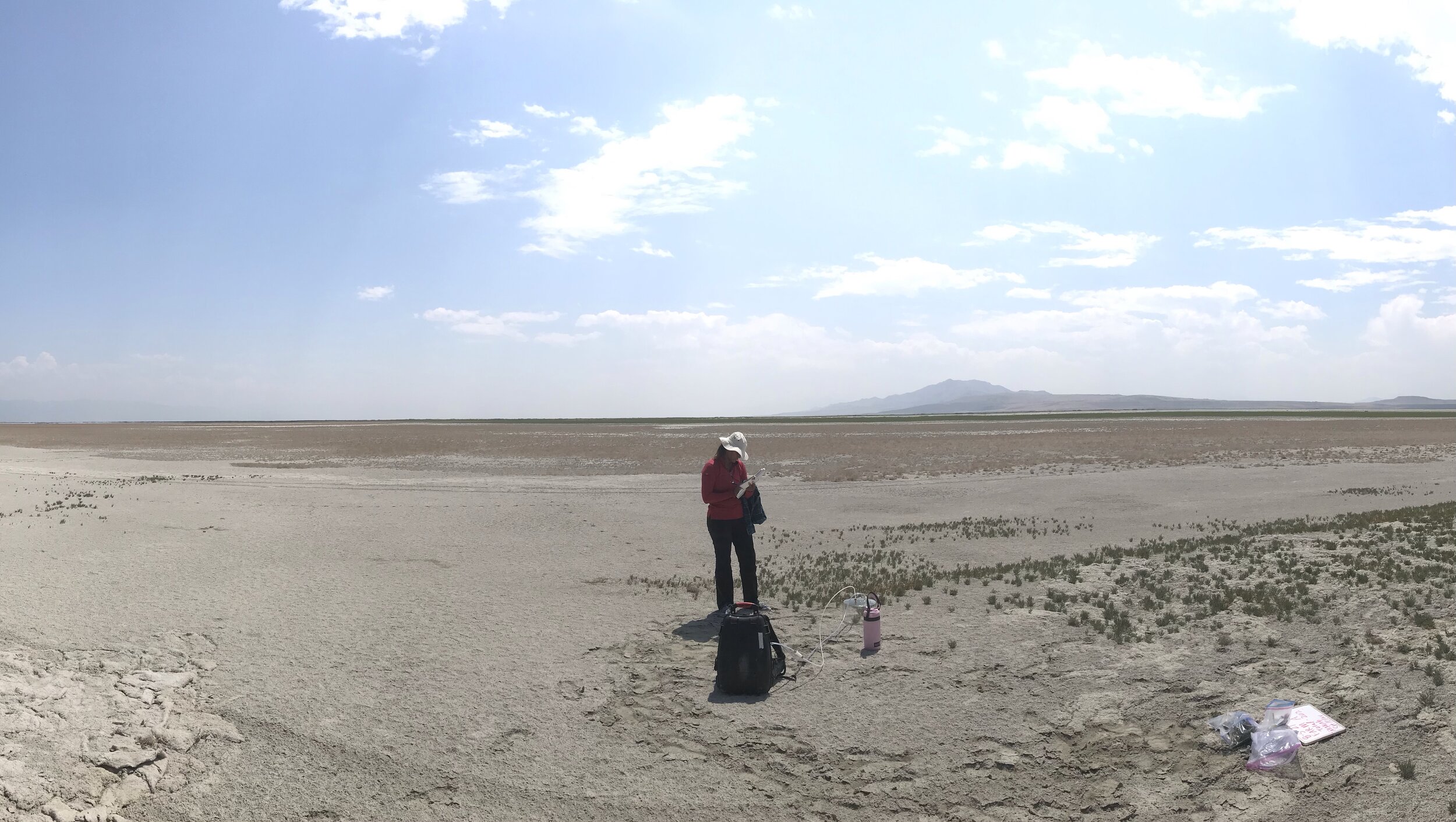Greenhouse Gas Emissions from Playas of the Great Salt Lake
Saline lakes are rapidly desiccating in response to agricultural withdrawals and climate change. Water levels in the Great Salt Lake are at historic lows, hitting 11 feet below average during summer 2021 and exposing approximately 1,150 square miles of lakebed sediments. When lakebed sediments are dried and exposed to the atmosphere, increased oxygen diffusion into the sediments enables the production and emission of carbon dioxide (CO2). This study quantifies the contributions of CO2 emissions from desiccated sediments in the playas of the Great Salt Lake.
This study was developed and administered by Dr. Soren Brothers, who is now currently at the Royal Ontario Museum, Research Assistant: Melissa Cobo Arias.
Carbon Dioxide Fluxes
Quantifying CO2 emissions from sediments that have been exposed with low water levels exposes a “blind spot” in global carbon cycles. In this project, synoptic sampling of representative regions of the lake has been carried out to capture seasonal variability in sediment CO2 release and estimate the annual production of CO2 from Great Salt Lake playas.

Graduate student, Melissa Cobo Arias, measures CO2 emissions from exposed sediments in Farmington Bay using a Picarro portable greenhouse gas analyzer.


